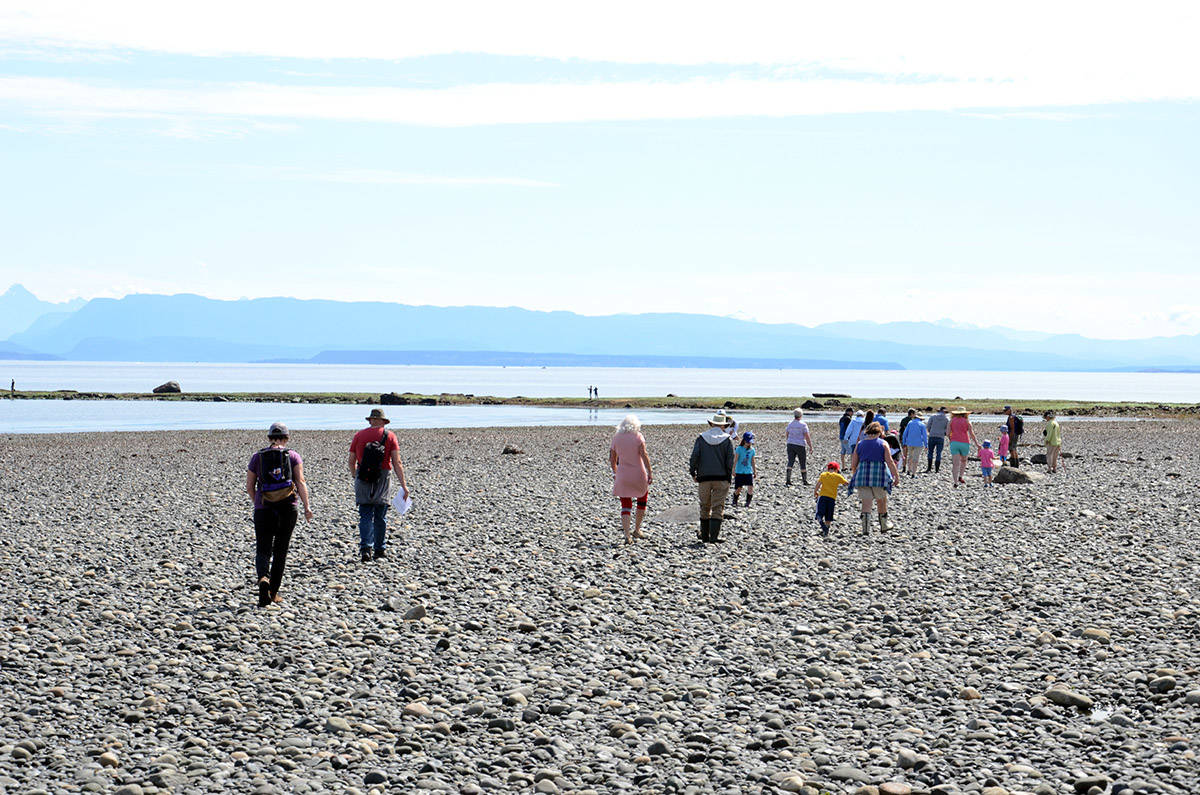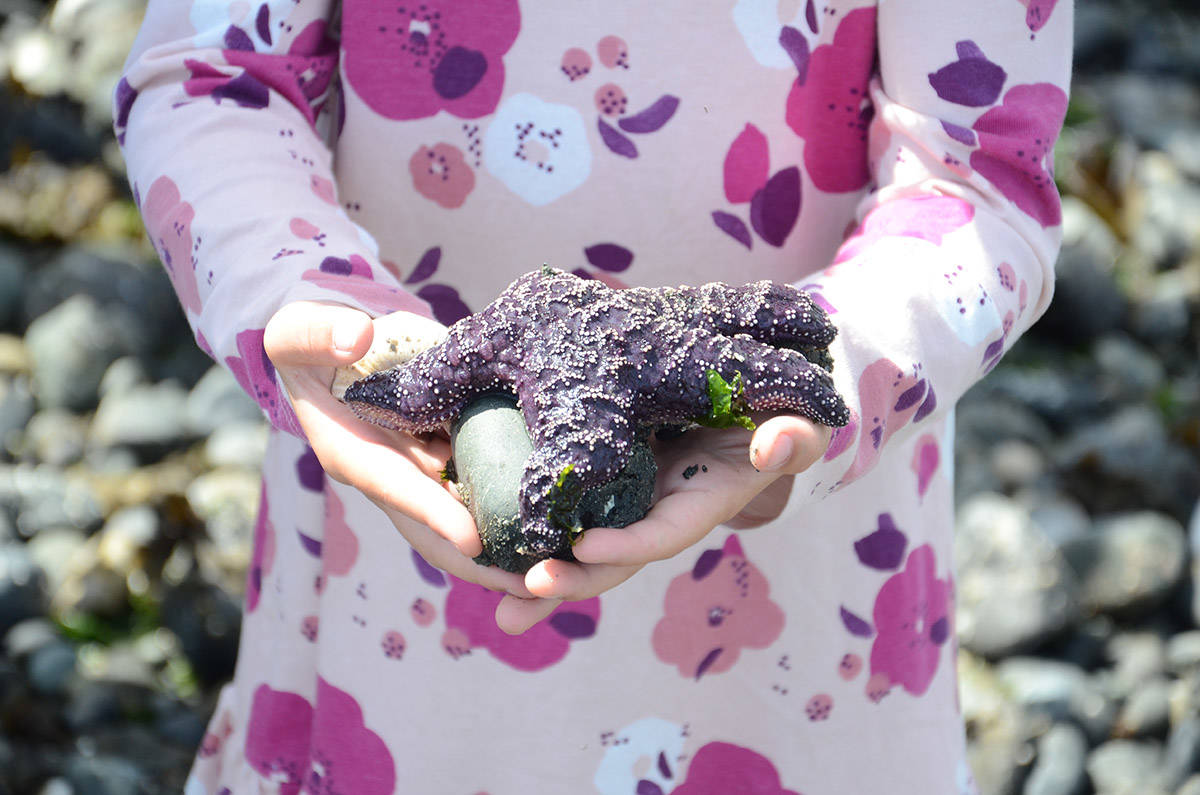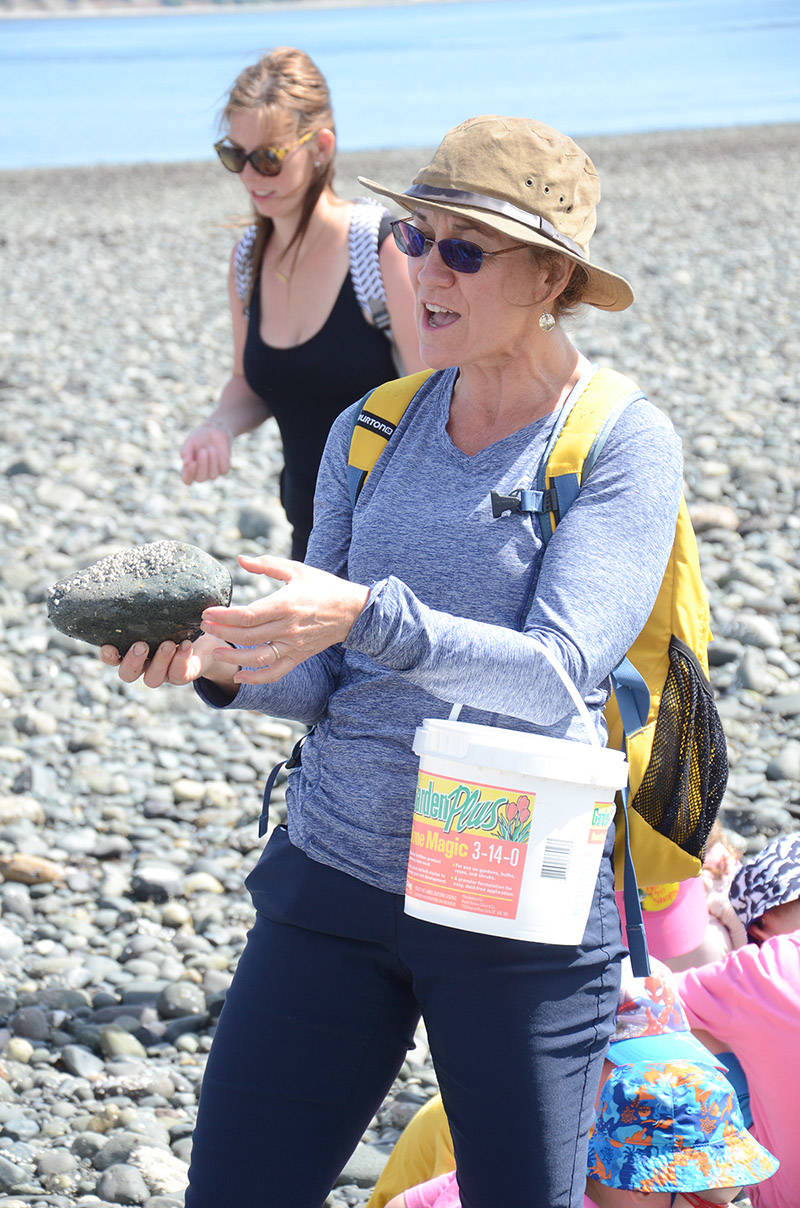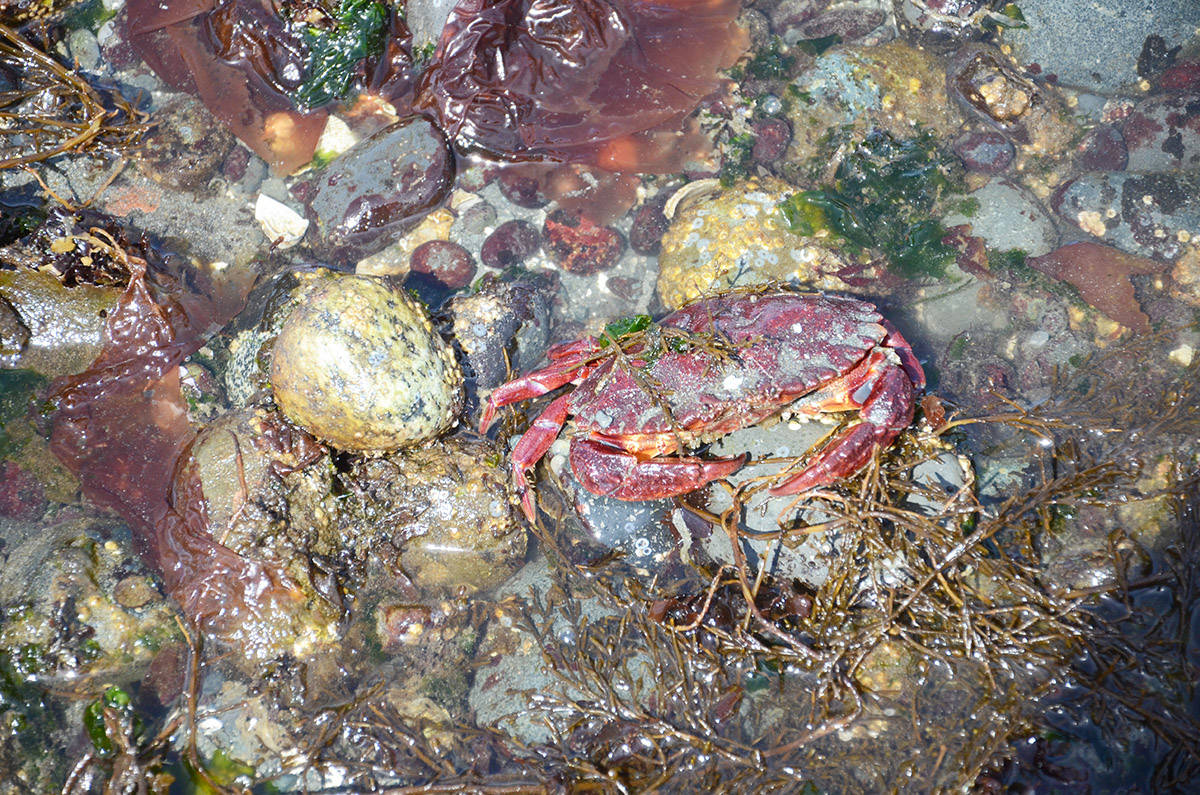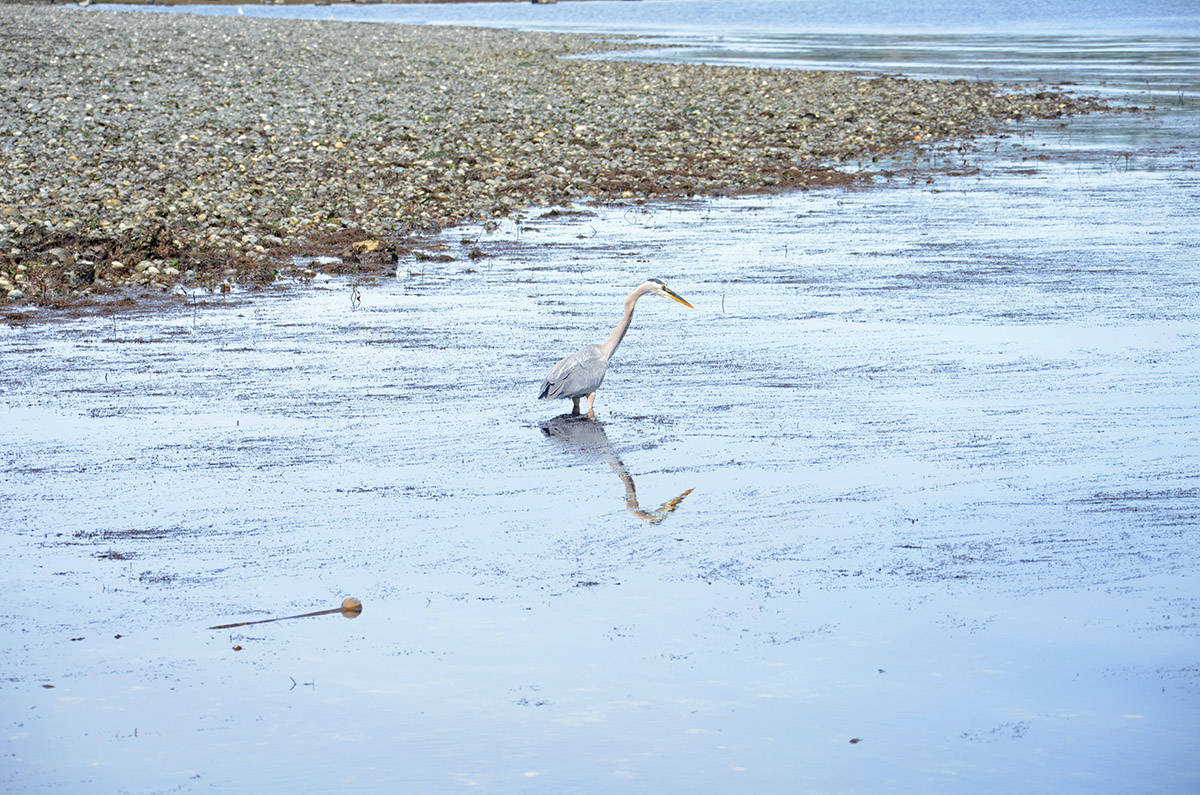The tide was extremely low on Sunday, making for a perfect day to head out to see the life at the local reef.
The Museum at Campbell River offers this intertidal walk around the Willow Point Reef to give the public a different vantage point on the area.
“Every spring we do a couple of them,” said Erika Anderson, museum promotions coordinator.
The weather was perfect, and the turnout was strong, with many Island residents attending, along with visitors from as far away as California and Arizona.
North Island College biologist Sandra Milligan, who has led these kinds of walks for 13 years, started with a brief introduction on safety so everyone understood the nature of what it means to live next to the ocean, as well as how to walk around the reef, knowing where the tide is at all times and disturbing as little as possible.
“We’ve had lots of fun sharing the wonderful organisms on the beach,” she said. “We’re gonna see a ton of organisms.”
RELATED STORY: Lots of cool stuff in the intertidal zone
She provided guests with species lists to help them identify what they saw. The group brought along a couple of buckets to getter closer looks at the marine life before returning them to their habitat.
Milligan compared some sea life to “cattle” and some to “lions,” in other words, predators, and she’d quiz the group whenever it came across a new species as to which group they though it was. It wasn’t as easy as it seemed.
She also delivered a bit of a discussion on the sex life of barnacles, delivered with young ears in mind, of course. Later on, she explained how moon snails eat clams by boring a hole into the shell and injecting an enzyme to digest the prey.
The day featured a number of creatures, such as clams, gunnels, moon snails, algae, red rock crabs and many more. The group even stumbled across an octopus’s den at one point, though the octopus did not seem to be at home at the time.
“I hope to leave you with lots of stories, so you can appreciate the incredible diversity that’s out there,” she said.
At various stops, she pointed out several sea stars huddled together in nooks and crannies within the reef to stay out of the sun, while the tide was out. She also talked about a recent wasting syndrome that has depleted the numbers of sea stars in the area since 2013.
RELATED STORY: Campbell River aquarium takes stock of sea stars for World Oceans Day
At one point, the group came across a rock turned over with a large number of dead tube worms – a reminder, as Milligan said, of why it was always important to make sure to set any rocks they overturned back to the way they find them.
Milligan also put in a plug for visitors to go to the local aquarium to get another vantage point on local marine life, so they could see what some of the creatures look like under water.
